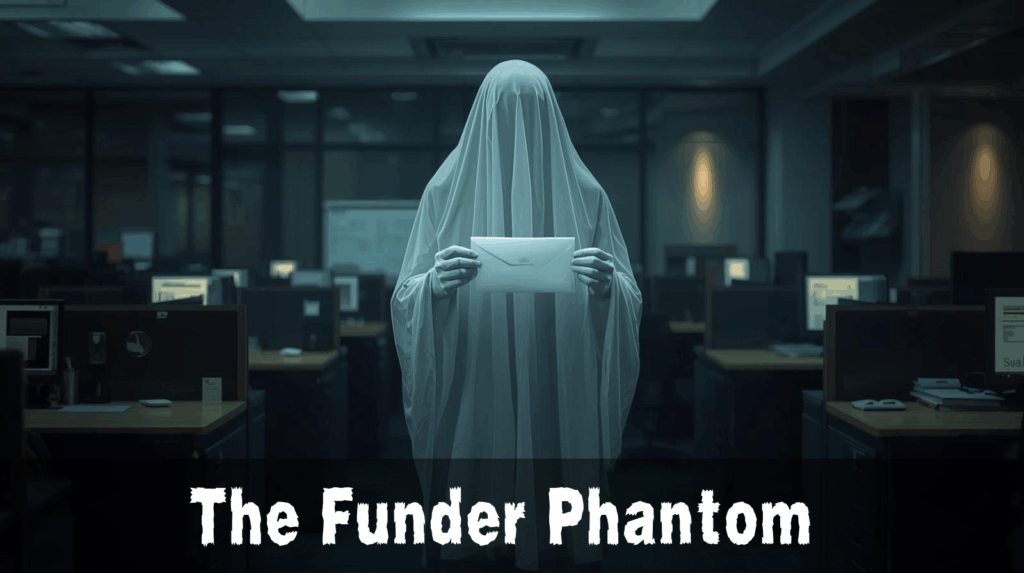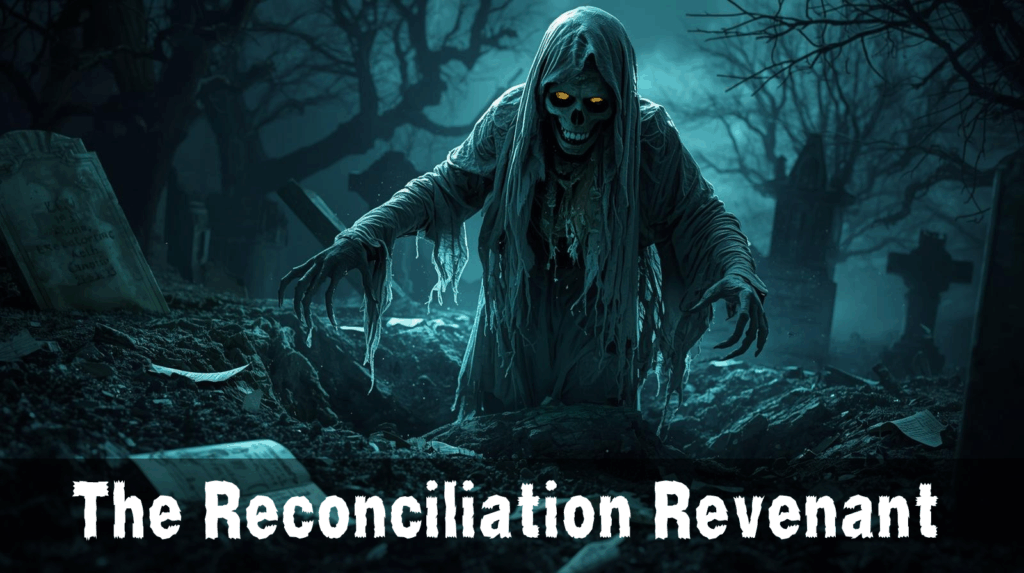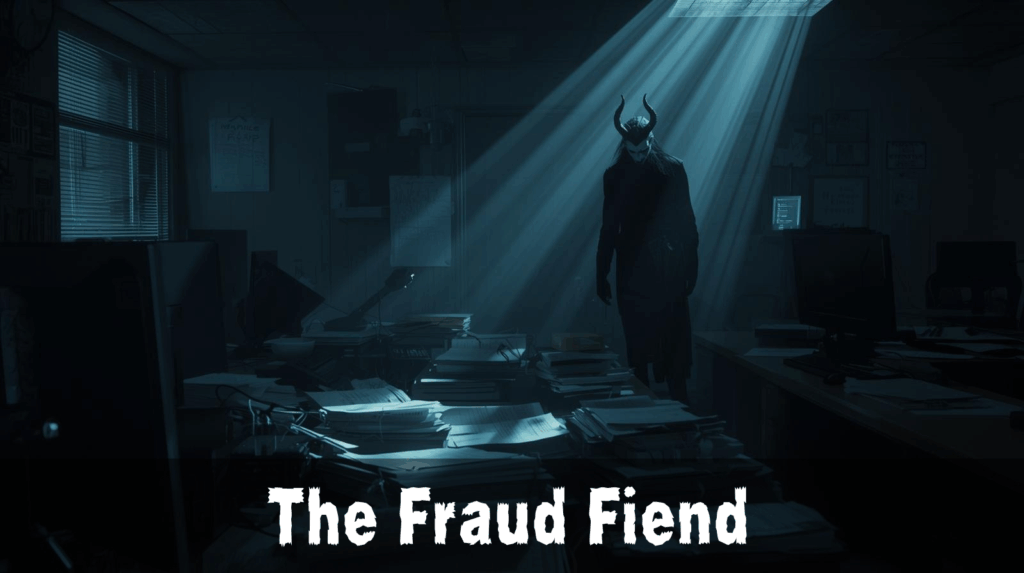
One candle burned in the corner, its flame bowing to an unseen presence. The silence was heavy, thick enough to choke on. A stray draft snuffed out the light, plunging you into pitch-black uncertainty. And in the suffocating dark, you heard it: loose receipts shuffling like restless spirits, a groan from unreconciled accounts dragging their chains, a choked-off scream of an overdue audit rising from the grave. Suddenly, the candle flared back to life, revealing horrors all around you. No, you were no longer alone — you were surrounded by accounting ghouls like the Reconciliation Revenant, the Overhead Ogre, and the Fraud Fiend.
So what is it that goes bump in the night? Perhaps it’s the ghost of a lost grant to gory reporting, years of dusty reconciliations lurking in the ledger, or the haunting of ancient processes clogging cash flows. In these cryptic tales, we reveal horrifying accounting mistakes nonprofits face…and how to exorcise them.
Pull up your chair and hold on tight as we might give you a fright while we recount the grisly details of eerie entries and monstrous misstatements. While you’ll find real accounting monsters along the way, you will also find the means to tame the terror and vanquish the frights.

It was a normal Friday evening, or so everyone thought. As bags were packed and coats put on, a letter from beyond appeared in the air. Its contents made the air grow heavy: Grant funding had been slashed, and key donors, once the lifeblood of programs, now seemed like ghosts, distant and unresponsive.
The office lights flickered. Spreadsheets rattled. Ledger lines twisted into shadows that whispered of compliance breaches and lost funding. Staff froze at their desks, the realization dawning that something unseen had crept into their records. This was no ordinary accounting hiccup. This was the Funder Phantom, and it threatened to drain the heart of their mission.
Haunting Symptoms
- Reports that are late, inconsistent, or incomplete
- Restrictions applied incorrectly (or not tracked at all)
- Missing or inaccurate documentation for restricted funds
- Funder questions or follow-up requests piling up
- A creeping sense of dread every time an audit deadline approaches
Exorcism Tools
- Clear documentation for every grant agreement and donor restriction
- Automated reminders and standardized reporting templates
- Regular internal reviews and reconciliations of grant activity
- Tracking software to flag anomalies before they grow
- Staff training to keep everyone aligned and accountable
- Multiple checks and approvals for compliance oversight
When to Call the Ghostbusters
- If grant or donor restrictions are too complex for your in-house team to track
- When funder reporting deadlines start piling up
- If your staff is stretched thin and compliance slips through the cracks
- When you need peace of mind before an audit
Without vigilant grant accounting, strong processes, timely reporting, and ongoing oversight, phantom funding losses can appear when least expected — haunting the unprepared like shadows that refuse to fade.

The noise started off as a quiet scraping, barely more than the musings of a pesky mole. But what began as a molehill became a churning mess of soil and critters – and what once was ignored, now could not be. This was no ordinary nuisance — the dead were rising. The Reconciliation Revenant had returned, ready to haunt anyone who dared whisper the word, “audit.”
Each unreconciled account strengthened its grip, growing hungrier with every month that passed. The team knew that if ignored, this Revenant could wreak havoc on trust, haunt compliance, and feast on the despair caused by poor operational decision-making.
Signs of the Undead
- Accounts left unreconciled for weeks or months
- Unexplained variances between records and bank statements
- Duplicate or missing entries in the books
- Staff avoiding reconciliations until audits loom
- Anxiety when “financial accuracy” is mentioned
How to Keep It in the Grave
- Regular bank and account reconciliations (monthly at minimum)
- Automated tracking tools to catch discrepancies early
- Clear policies requiring timely reconciliations
- Segregation of duties to prevent tampering or oversight gaps
- Surprise internal spot checks to keep the revenant from rising unnoticed
When to Summon the Hunters
- If reconciliations are months behind and staff feel overwhelmed
- When variances recur and can’t be easily explained
- If limited staff creates conflicts of interest in reviews
- Before an audit, when confidence in reconciliations is shaky
This ghoul has been laid to rest – for now. Take heed: Without consistent reconciliations and vigilant control, the Revenant will rise again.

The night was heavy, the air thick with unease, and the program budgets shuddered as if sensing a lurking predator. Then came a deep rumble that shook the floorboards, as shadows stretched and twisted like dark, creeping vines. Hidden costs gnawed at margins with the relentless hunger of teeth on brittle bone, leaving the ledgers cracked and trembling.
The Overhead Ogre had arrived. Its hulking form thundered through the corners of every spreadsheet, hungrily devouring indirect costs with gnashing teeth and clawing fingers that left shredded notes and fractured formulas. Every unmonitored expense became a bone for the Ogre to chew, every vague policy a feast laid before it. Programs teetered, budgets bled, and the office felt a cold, lingering dread, knowing that one slip could allow the creature to consume resources whole.
The Ogre’s Appetite
- Unclear or inconsistent allocation of overhead costs
- Rising indirect expenses without clear justification
- Staff unsure which costs belong to programs vs. administration
- Donors or auditors questioning overhead percentages
- A budget that always feels stretched thinner than it should
Banishing the Beast
- Clear overhead allocation policies understood by all staff
- Standardized methods for calculating and assigning costs
- Transparent documentation to back up every allocation
- Regular oversight of overhead ratios and trends
- Training to ensure staff consistently apply allocation rules
When to Call the Monster Slayers
- If overhead allocations are unclear or undocumented
- When donors raise red flags about your overhead reporting
- If overhead costs grow faster than program costs without explanation
- Before submitting major funding applications where overhead transparency matters
The Ogre had retreated into the shadows, defeated by diligence and transparency. Yet the warning remained: Without careful tracking, strong policies, and vigilant monitoring, the Overhead Ogre will return to feast on unsuspecting budgets.

The office lay in uneasy silence, the hum of computers the only sound. Shadows spread across the ledgers, flickering like restless spirits. Something moved in the dark — subtle at first, a phantom entry here, a mysterious transaction there. The air seemed colder, the hairs on the back of your neck rising.
The team sensed it (maybe too late), a Fraud Fiend slipping through weak controls and unseen gaps, prowling the books like a predator in the night, watching for any misstep, any lapse in vigilance.
The Fiend’s Habits
- Unexplained or duplicate transactions
- Approvals missing from invoices or expenses
- Unusual vendor activity or suspicious payments
- Staff reluctant to question anomalies
- A cold dread when auditors request transaction support
Binding Rites
- Segregation of duties to reduce temptation and opportunity
- Surprise audits and regular transaction reviews
- Strong internal controls and approval workflows
- Documentation requirements for every transaction
- Fraud detection tools and consistent monitoring
When to Summon Reinforcements
- If fraud is suspected but patterns are hard to trace
- When staff resources are too limited to ensure proper controls
- If leadership wants independent oversight to deter misconduct
- After discovering fraud, to design stronger controls for the future
Now, the office has no creepy chill, no restless spirits. The ledgers stand balanced, and programs can proceed without fear of hidden predators. Yet the warning remains: Without constant vigilance, robust processes, and strong internal controls, Fraud Fiends are never far away. Even a single lapse can summon them from the shadows, reminding all who enter the books that vigilance is the only true defense.
Postmortem
No matter the monster, one thing is clear: The real terror comes not from monsters themselves, but from neglect, weak oversight, and broken processes. These are the cracks that allow accounting nightmares to creep into your organization, devouring resources and threatening programs.
The good news? Every crypt can be fortified. The key takeaways — your “warding spells” — include:
- Clear processes and documentation to ensure every transaction is accounted for
- Regular reconciliations and reviews to catch anomalies before they grow
- Proper software and strong data hygiene to track every dollar accurately
- Forecasting, oversight, and variance control to keep budgets and programs on course
- Access to expert help or outsourced accounting to bring experience and vigilance to your team
These are not just scary stories — they are cautionary tales for nonprofits. Following these steps keeps your finances safe, your programs thriving, and the monsters at bay.
It’s time to exorcise your nonprofit’s financial demons. Bring in your accounting ghostbusters and put the right protections in place today.
Share This Post:

Chazin
With over 20 years working exclusively with nonprofits, we pride ourselves in having a unique understanding of nonprofit accounting needs. We believe that nonprofits deserve personalized, quality service and should not settle for a one-size-fits-all approach. We collaborate with you to provide a fully virtual and customized solution that is not only cost-effective but also strengthens your accounting function. We offer a team of industry experts at your disposal to provide advice, leading technology, and to supplement existing staff to improve efficiency and compliance.